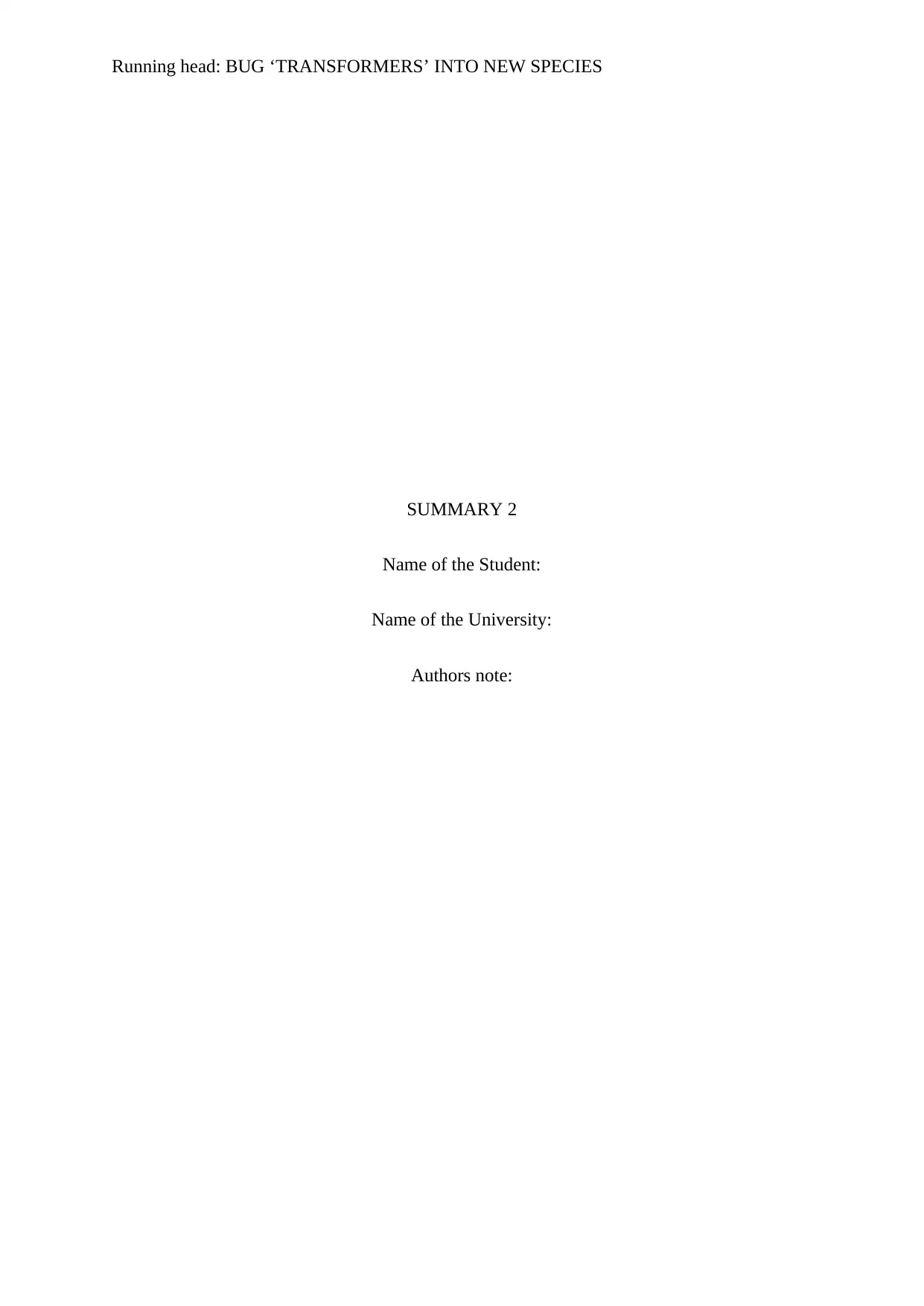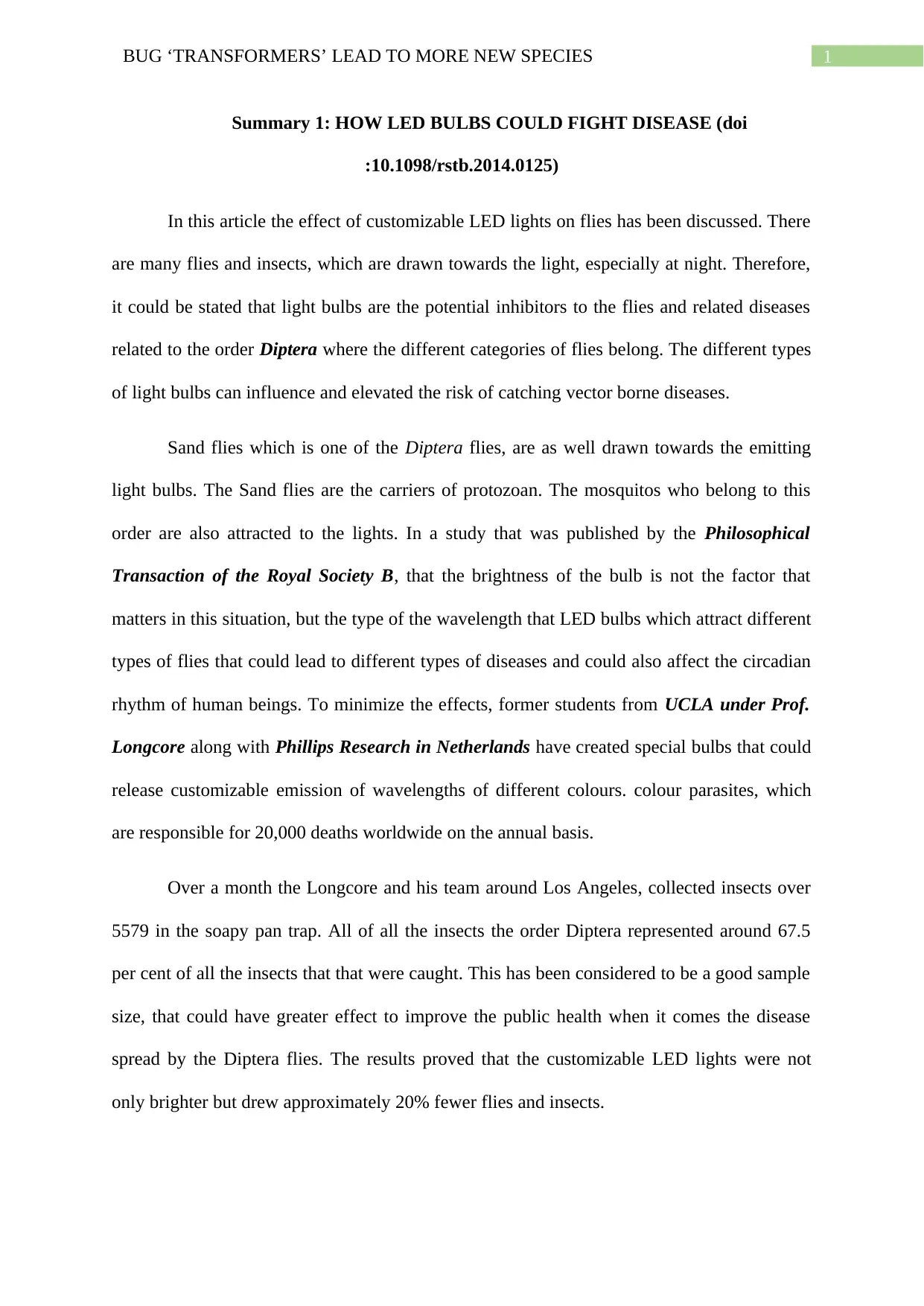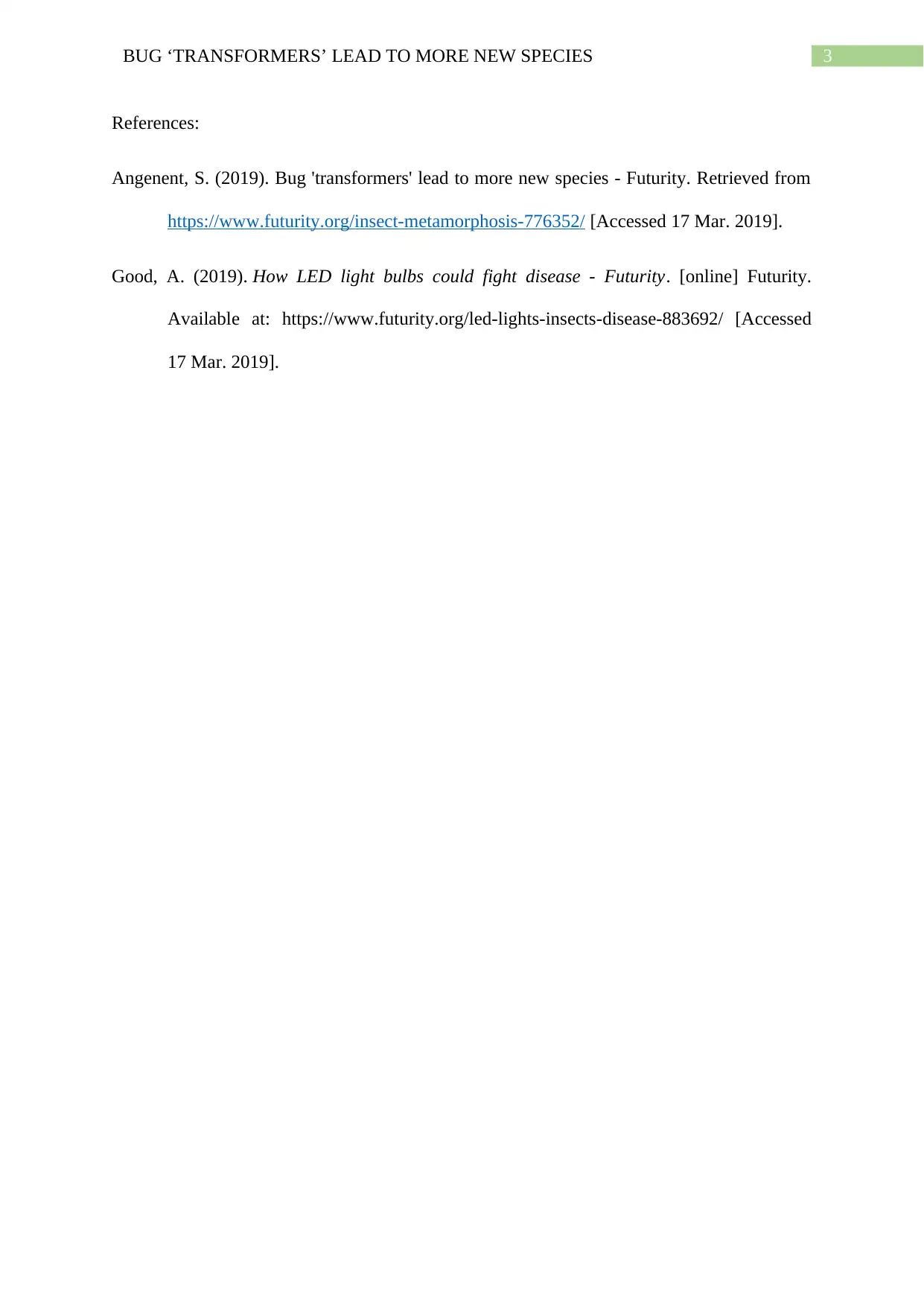Summaries: LED Light Bulbs, Disease Impact & Bug 'Transformers'
VerifiedAdded on 2023/04/07
|4
|691
|456
Summary
AI Summary
This document contains two summaries of scientific articles. The first summary discusses research on how customizable LED light bulbs can be used to combat the spread of vector-borne diseases by reducing the attraction of insects, particularly flies, to light. The research indicates that the wavelength of light emitted by LED bulbs, rather than brightness, influences insect attraction, and customized bulbs can significantly reduce this attraction. The second summary explores the impact of metamorphosis on insect diversification, referencing a study that analyzed fossil records to demonstrate that insect species undergoing metamorphosis exhibit greater diversification and lower extinction rates. Both summaries highlight the potential for technological and evolutionary factors to influence insect populations and human health. Desklib offers a wealth of similar solved assignments and past papers for students.
1 out of 4





![[object Object]](/_next/static/media/star-bottom.7253800d.svg)